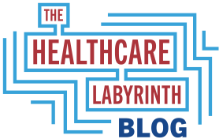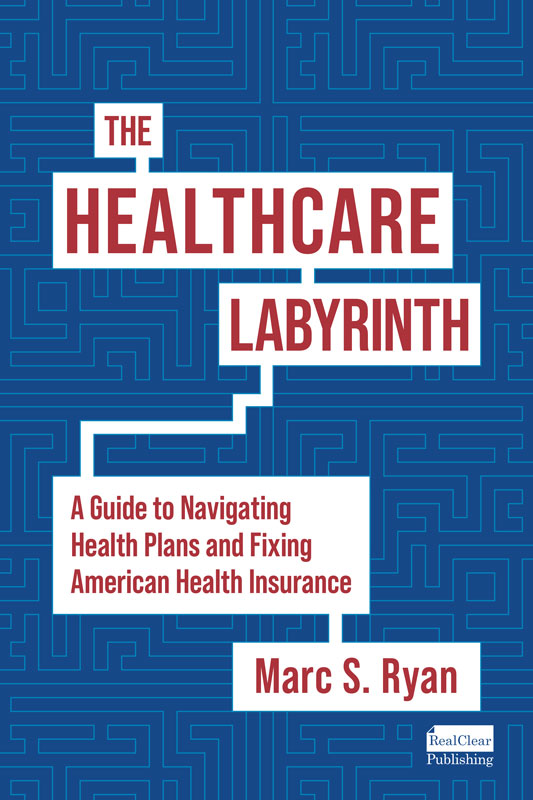The push for lower drug prices in general and reform of America’s Pharmacy Benefit Management (PBM) industry specifically are major focuses of Capitol Hill and state and federal regulators. With these trends taking center stage, I thought it would be interesting to lay out where the impetus for reform is coming from and what the future likely holds. I don’t pretend this is an exhaustive piece, but it is meant to set the table for future discussions and blogs.
It is clear to me that the push for reform substantially is coming from outside the industry, but there are clear trends even within the drug and PBM industry toward change.
What is the current status?
It is critical to recognize that PBMs alone do not set prices in American healthcare. We have a tremendously opaque drug supply channel that begins with drug makers. The below walk-through is simplified and does not include everything. But it gives you a feel for the complexity and confusion that abounds. Further, I am not even covering the more complex world of medical drug supply and costs.
- The largest costs come from brand drugs. These drug makers have the near unilateral ability to set what I will call gross price. After that, they engage in grand bargains with other drug channel players to arrive at what net prices may be via service fees, rebates, and more. The most important discussions are with PBMs/health plans/employers on where a given brand drug will be placed on a drug formulary. Better placement will mean greater sales for the drug maker and that usually means better rebates to the PBM/health plan/employer. (Generic drugs follow a similar process but usually without rebates.)
- Below the drug makers are a series of middlemen, principally wholesalers, who get their generous share of profit too. Wholesalers acquire drugs from manufacturers and there are numerous fees and transactions that can apply here. Wholesalers then contract with pharmacies to supply drugs.
- PBMs, along with rebate aggregators, contract with health plans or self-insured employer groups to administer drug benefit plans, including claims, network, rebates, and quality oversight. Relationships between PBMs and health plans/employers historically have lacked transparency too, with plans/employers complaining that PBMs are not open about all the relationships they have upstream and that actual drug prices are not easily quantified, especially given a retroactive rebate system and reconciliations that happen after the fact with pharmacies.
- PBMs contract with pharmacies. These relationships are complex with both point-of-sale payments as well as retroactive adjustments/clawbacks. Network and volume can play a big part in payments to pharmacies. Pharmacies complain they often cannot tell what the final payment for a drug transaction may be until months down the road.
- Where does the poor consumer fit in? For the most part, with some exceptions, the consumer goes to a pharmacy to fill a brand drug and is paying his or her drug cost-share based on the price of a drug before a health plan or PBM retrospective rebate is factored in. This creates huge affordability issues for many, especially those with one or more disease states and multiple drugs. High costs for brand drugs as well as some generics create overall affordability issues for consumers.
The important point here is that with each transaction, there can be multiple payments or parameters that impact price. Little of this is understood or revealed to the public or even various participants in the process.
What is the PBM landscape?
While there are many PBMs, CVS (over a third), ESI (about a quarter), and Optum (over a fifth) control about 80% of the market. Humana’s internal PBM, Prime Therapeutics, and MedImpact round out all but a small percentage of the remaining market. There are about 50 to 60 other PBMs that struggle to gain market share or are just starting out. The truth is, given the overall power of the big three, any other entity struggles to get the very best price with manufacturers and rates with pharmacies given their lack of substantial volume.
The rise of transparency
As I alluded to, health plans/employers have been exceedingly frustrated over the lack of transparency of PBM contracts. Health plans/employers argue PBMs have not disclosed actual drug costs, all the various fees and rebates that PBMs get from manufacturers (or the size of them), and the actual amounts paid to and recovered from pharmacies. Therefore health plans/employers and their members are paying higher overall prices for drugs.
This has led to the rise of so-called transparent pricing, where the net cost of each drug is known and the PBM simply charges an administrative fee.
Lest anyone think I am an opponent of the PBMs, I am actually sympathetic to their current political plight. PBMs bring the greatest value in the drug supply chain. Through prior authorization, they have promoted the use of low-cost generics and they clearly stop unnecessary expense. They also ensure quality in the system. That is not to say that some of the ways PBMs operate do not need to be reformed, but I find it troubling that PBMs have the biggest target on their backs. The GOP has given brand drug makers a free pass and chosen to partner with Democrats and focus on PBMs as the nemesis.
Who is driving reform?
Lawmakers and Regulators – Capitol Hill has made PBM reform one of its top focuses in the healthcare field. While we don’t know for sure yet, it is likely that some significant PBM reform bills will pass Congress this year or early next. Reforms proposed so far include:
- Banning spread pricing (charging payers more than they reimburse pharmacies for a given drug and retaining some or all of the difference) outright
- Related to the above, dictating how PBMs charge customers, including disclosures and 100% rebate and other discounts or compensation pass-through
- Prohibiting clawbacks from pharmacies
- Mandating reporting to encourage transparency
- Various initiatives to promote biosimilars given the huge price tags of brand drugs in this area
- Having rebates applied at the point of sale
- Reform of formulary tiering
What passes may be dependent on the huge problems on Capitol Hill (especially related to the government shutdown) and different views between the two chambers. A betting man would say that a ban on spread pricing (and thus some dictates on how PBMs contract), transparency reporting, and biosimilar promotion will pass.
The Centers for Medicare and Medicaid Services (CMS) has proposed rules to increase reporting to encourage transparency. In addition, it is and will be scrutinizing how payments are made in government programs by payers to pharmacies. State laws have been passed reforming PBM pricing as well.
Traditional PBMs Themselves – PBMs have concluded that reform is needed. This has come from government and regulatory scrutiny as well as trends in the industry. While change is slow, PBMs are introducing transparent models with health plans/employers. In addition, they are responding to other criticism by adjusting formularies to make insulin and other high-cost drugs less expensive, capping copays in tiers, addressing some of the network pharmacy payment issues, eliminating so-called spread pricing, and working to give patients the lowest drug cost possible through tools and technology. Some doubt the sincerity of the effort and whether the models are truly transparent. Some analysts suggest transparency may cost some health plans and employers more.
Upstart Transparent PBMs – New PBMs are emerging and working with health plans and employer groups on truly transparent models. These entities, such as CapitalRx, SmithRx, SanaRx, Navitus and others, have small market share now but could grow as faith in the model takes hold and the entities prove their wherewithal by serving customers. They even have created an alternative PBM trade group that takes on the traditional trade group and endorse PBM reform on Capitol Hill.
But these entities could be hobbled by the sheer dominance of the big three. As an example, they may need to go to the big three and rebate aggregators themselves to obtain rebates and other discounts from drug manufacturers. That is unless they can create an alternative model. That is easier on the generic side and more problematic on the retail side (see more later).
Health Plans and Employer Groups – More and more, sophisticated health plans and employer groups are demanding transparent pricing and abandoning the concept of full-service PBMs.
A good example of this is the recent announcement by Blue Shield of California. They are ending a traditional PBM relationship with CVS and devising a new pharmacy care model with various programs to reduce pharmacy costs and improve quality. These include specialty drug management (still with CVS), refined drug manufacturer negotiations (through Prime Therapeutics), claims payment (through Abarca), and simple and transparent pricing (through Mark Cuban’s Cost Plus Drugs and Amazon).
BSC believes all of these vendors are best in breed in their area. They want to break the opaqueness of a traditional model. It forecasts reducing costs overall by 10% to 15%. Some question the speed and complexity of the endeavor and whether there is enough alignment or incentives in the buckets created to make this successful.
The Innovators and Disruptors – And finally there are the innovators who seek to disrupt the current PBM status quo. These are not PBMs themselves, but entities that have sought out better ways to break the traditional supply chain and go direct to consumer. For example, Mark Cuban’s Cost Plus Drug has been successful in directly acquiring generic drugs (it is its own wholesaler) and allows consumers to access these drugs at cost, plus a 15% markup, a $3 pharmacy fee and a$5 shipping fee. The direct and transparent model is successful. A few analyses say Cuban’s process could save hundreds of millions (perhaps billions) annually in Medicare as compared with traditional PBM arrangements. Cuban is now moving on to including biosimilars to offset the high-cost of certain brand drugs. There are other online pharmacies, such as Amazon Pharmacy, DiRx Health, and OneFul, with similar models. Cuban’s model has great promise if it can go from generics (where few if any rebates exist) to brand drugs.
In the end, all of these trends could eventually bring a truly transparent model. Alone, it could dramatically reduce drug spend in healthcare as well as what people pay through cost-sharing. What it won’t solve is the high prices of brand drugs per se. The Inflation Reduction Act (IRA) seeks to begin that process soon, but is fairly limited overall and it applies just to Medicare right now. This is another important leg in our overall effort to rein in drug costs.
#drugpricing #pbms #healthplans #pricetransparency #transparency
— Marc S. Ryan





